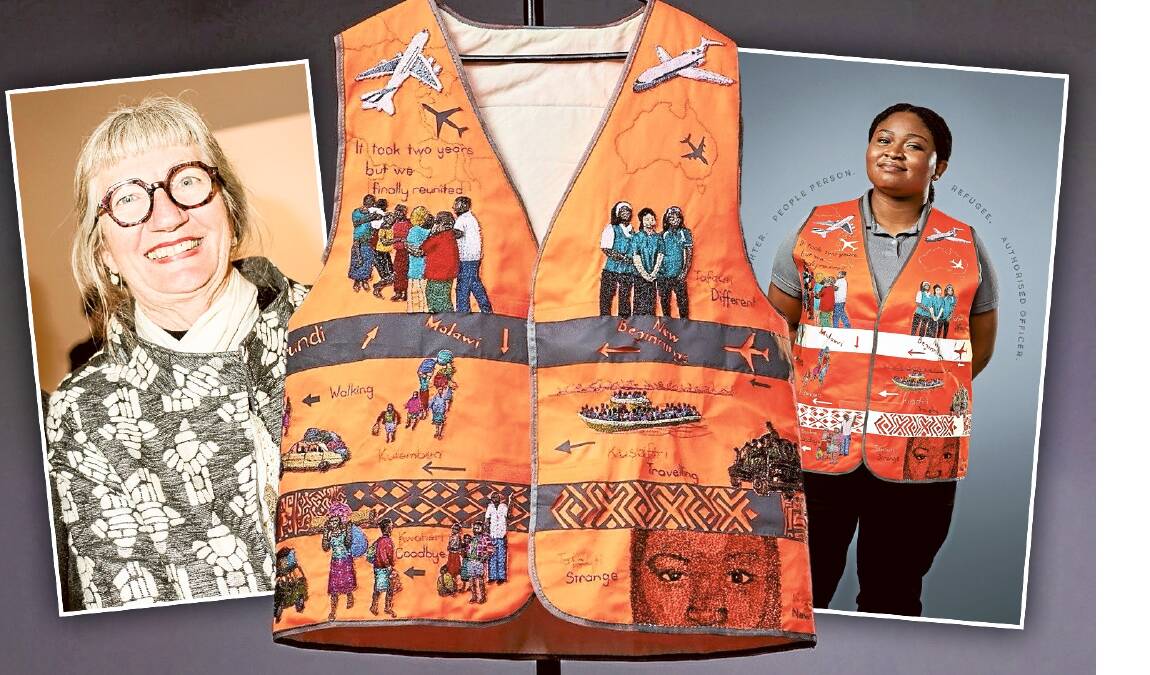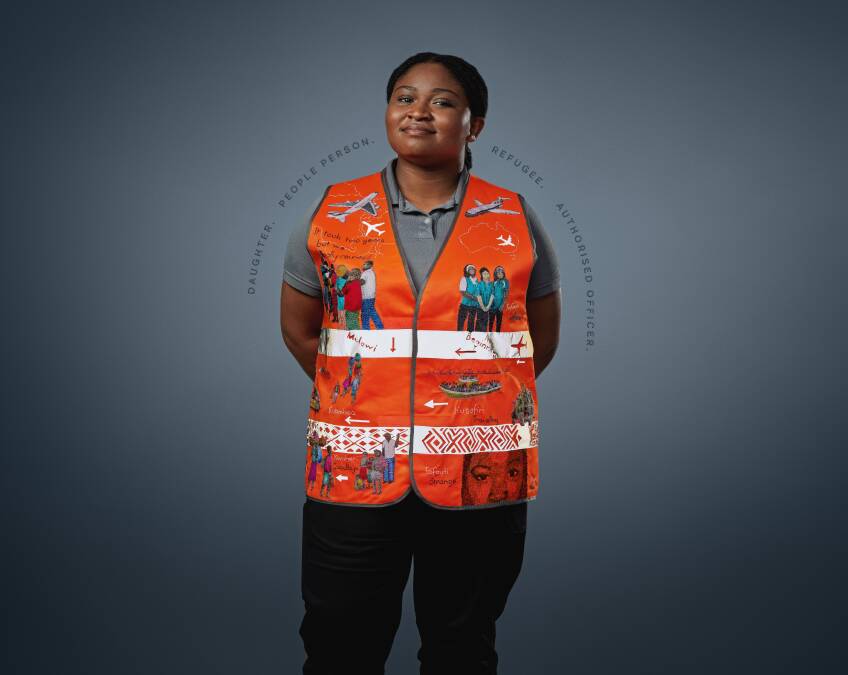It's safe to say this is the first time Canberra artist Sharon Peoples has been asked to embroider a hi-vis vest.
Her work is seen in places such as the Parliament House Collection and in national and international exhibitions.
She was one of four Australian textile artists commissioned by the Victorian government to bring transport workers' personal stories to life through artwork embroidered onto their safety vests.
The Hi-vis Humanity project was prompted by an increase of abuse in Victoria of its front-line workers.
The vests will be displayed across Victoria's public transport network while online films will expand upon the workers' stories.
Ms Peoples made a vest for a 21-year-old train station attendant from Melbourne called Ninah who was also a migrant from the Congo. Ninah told Ms Peoples she was regularly abused by people.

"Walking around, doing her job, in the train stations, people are just yelling at her because of her colour, basically," she said.
"Here she is trying to help people, trying to assist people and this is what happens."
Ms Peoples used reflective thread to weave Ninah's story on to her vest. She also cut some of the vest's reflective stripes into the traditional designs from the Congo.
The vest also told the story of the journey Ninah's family took to achieve a better life, away from war.
"Her mother and two sisters had left the Congo and went to Malawi and four years later dad, with four children, hitchhikes through four countries and catches ferries to get to the family," Ms Peoples said.
"They thought they were going to the UK, because they had family there. But they went to Sydney, somewhere they knew very little about.
"During this transition, the kids had had very little education and were then thrown into school here, wearing uniforms they had no concept of.
"So here is she, being abused by people who are catching a train for 30 minutes and her journey is enormous. Very interesting. Very touching.

"And, so for me. I'm a progressive voter, I wouldn't say I'm racist in any way, but working through this story, it's made me really - whenever I see anyone, I just smile. I feel like an idiot because I just think, 'Oh, we have no idea what you've been through, what you've been doing'.
"So it's made me a better person to work with her story. And that's the point of it, to understand her story."
The vest is a marvel, showing the planes and cars and boats the family used to get out of the country. Families saying goodbye and families reuniting. Old cultures and new countries.
"I've never worked so hard in my life," Ms Peoples said.
"It had to be done in four weeks and that's all I did - ate, drank and worked on this project."

The vest, as such, is not worn day-to-day by Ninah. It was more a tool for the campaign. But Ms Peoples hopes the vest does end up with Ninah for good.
"I just feel so honoured to have worked with her story," she said.
"It was one of the most fantastic opportunities I've had, really, to work in that way. It's totally outside making art pieces but using my skills as stitcher as a way of telling a story has been fantastic."
Ms Peoples says the messages from the Hi-vis Humanity campaign could equally be applied to front-line workers in the ACT. The project had also been another way to show while embroidery was "often seen as women's work", it was actually "a great medium for narrative". And, in this case, helped to reveal the person behind the uniform.







